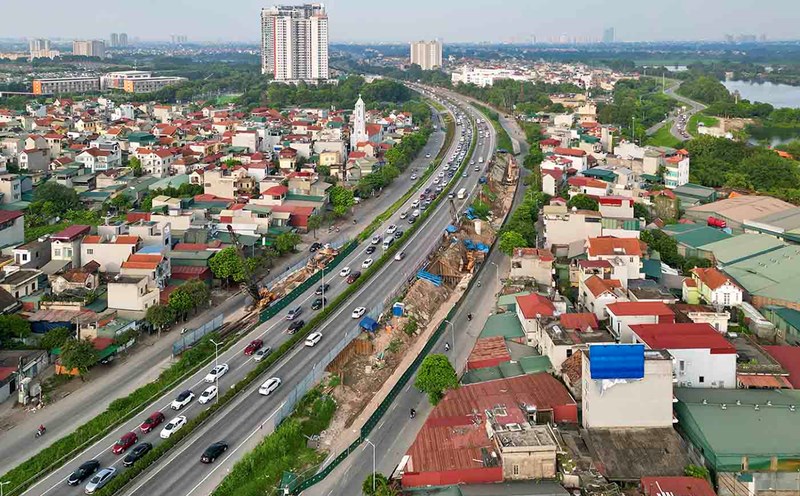The Institute of Meteorology, Hydrology and Climate Change has issued a climate forecast for the 3-month period (from April to June 2025) based on climate change analysis, the Institute's statistical model, and forecast bulletins from major climate centers around the world.
Regarding ENSO activities, currently, atmospheric and ocean conditions reflect that ENSO is in the cold phase. ENSO is forecast to likely switch to a neutral state in 3 months (from April to June 2025) with a probability of about 75 - 85%.
The temperature trend in the 3 months from April to June 2025 is likely to be approximately equal to or higher than the average of many years in the Northern region; approximately equal to or higher than the average of many years in the Central, Central Highlands, and Southern regions.
The summer monsoon in the South and Central Highlands is likely to start operating at a level close to the average of many years. The intensity of the summer monsoon is also forecast to be approximately the average of many years.
However, in the early stages of the season, the summer monsoon is likely to be more active than average.
Hot weather in the 3 months from April to June will appear widely in the Northwest, South, and Central Highlands regions. The intensity of hot weather is less severe than in 2024.
During the 2025 dry season, drought conditions in the Central region are not serious.
Regarding rainfall trends, in the next 3 months, total rainfall is likely to be approximately the average of many years in the North and North Central regions; approximately to higher than the average of many years in the South Central regions, Central Highlands, and South.
The start of the rainy season in the Southern and Central Highlands regions is approximately the same as the average of many years.
Regarding extremist phenomena at sea, forecasting the start of the storm season is approximately approximately the average for many years (about June). The number of tropical vortices (tropical storms/depression) operates in the South China Sea and affecting Vietnam in 2025 is likely to be approximately an average of years.
According to the average data of many years, there are about 12 - 13 tropical cyclones in the East Sea and 6 - 7 tropical cyclones affecting Vietnam.
From April to June, the number of tropical cyclones active in the East Sea and affecting Vietnam is likely to be approximately the average of many years. According to the average data of many years in the above period, there are 1 - 2 storms/tropical depressions in the East Sea and about 0 - 1 affecting Vietnam.
Some concepts of ENSO according to the Institute of Meteorology, Hydrology and Climate Change:
El Nino: El Nino is a concept used to refer to the phenomenon of abnormal warming of the surface water layer in the eastern equatorial Pacific Ocean. El Nino is also known as the "hot spot".
La Nina: In contrast to El Nino, La Nina is a concept used to refer to the abnormal cold phenomenon of the surface water layer in the eastern equatorial sea of the Pacific Ocean. La Nina is also known as the "cold flood".
Southern fluctuations (SO): SO is a concept used to refer to the fluctuation phenomenon of the pressure difference between the western and central equatorial Pacific.
ENSO: Because the two phenomena El Nino/La Nina (ocreatic) and SO ( atmospheric) occurring on the equator TBD are closely related, they are linked together into a dual phenomenon, abbreviated as ENSO.











